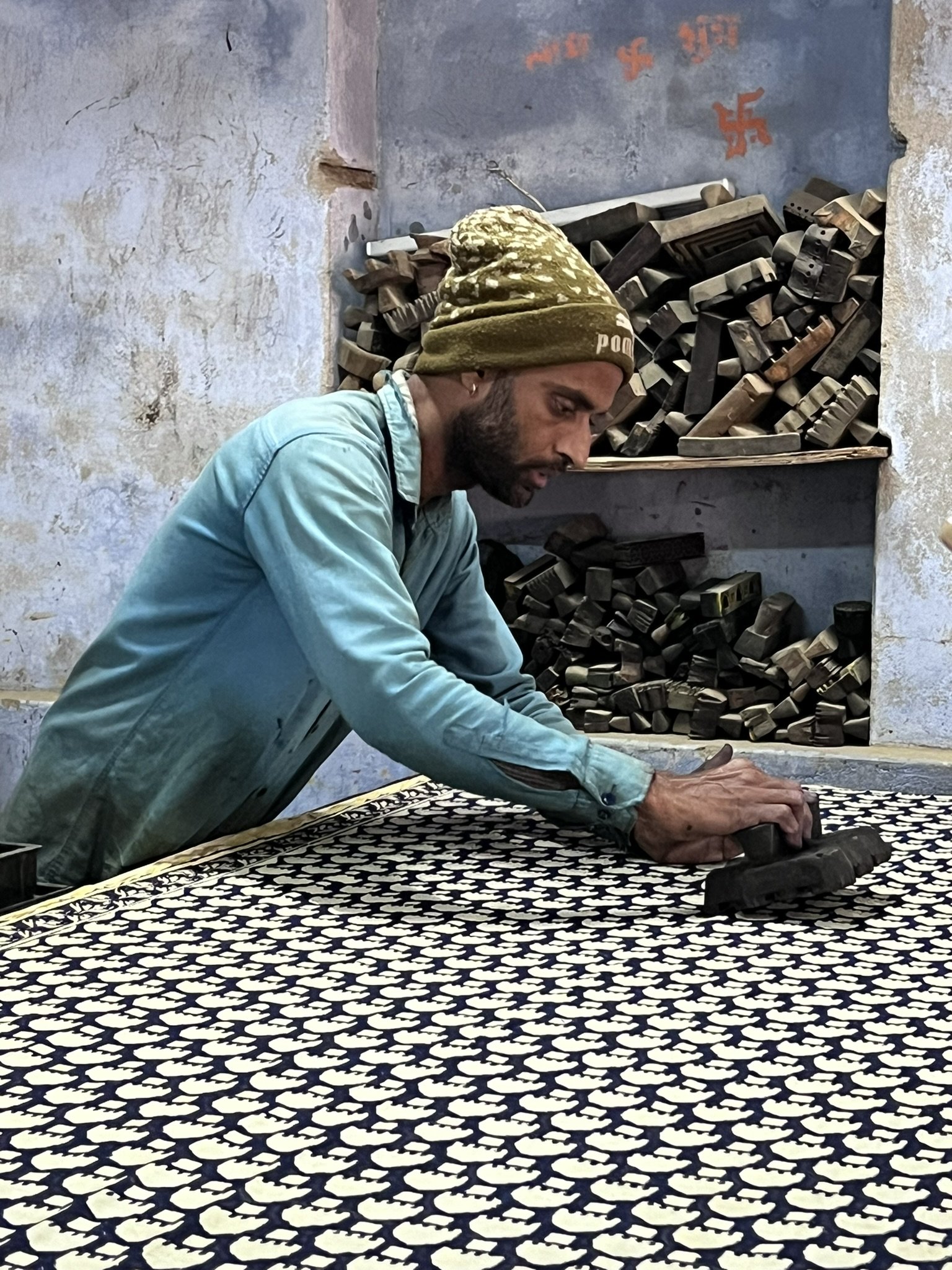The Post That Got Everyone Talking
Who knew that a 14 second video on Instagram would spark so much interest?! During my 3 day workshop at Studio Bagru, in Bagru, India, a major print center southeast of Jaipur, I learned block print techniques. In the IG video, I was working on a resist dye and indigo rug. While my technique still needs a lot of work, it was fascinating to work with the blocks.
Truly an artisan’s village, Bagru is where the entire community works in printing - block printing to screen printing to indigo dyeing. In the evenings, I would walk around the village, listening for the familiar thud of the blocks on the print tables.
The rhythm of Bagru is set by cloth. Houses and print studios are arranged in clusters bordering open spaces. In the early morning, meters and meters of cloth are printed and dyed and then laid out to dry. It happens quickly and efficiently. You may see lengths of colorful mul mul next to lengths of delicate silk with dogs and children weaving through the rows of fabric. By late morning, all the fabric has dried, been carefully folded and taken back to the print shops, leaving indigo stained grass. After school, the drying fields are filled with boys playing cricket.
Block printing is an art and I quickly discovered that 3 days is not enough time to fully master 1,000 years of craft. Bagru is known for its resist dye techniques in red and black. Some designs can take 2 to 3 days to complete. There are also vats of indigo for dip dyeing. The vats are always covered with a wooden lid (they are a about 10-12 feet deep) to prevent anyone from falling in. Before each dyeing session, you have to remove the froth that comes to the top of the vat. Cloth is fed into the vat using bamboo sticks so you can easily push/pull fabric in and out of the vat.
How do I explain the tens of thousands of views on IG? Very simply…block printing is a fascinating process that is mesmerizing to watch. Long lengths of plain cloth are transformed into vibrant pieces of art. It is like watching ballet and the end result is a piece of cloth that will then be transformed into something you wear. I love knowing exactly where my clothing comes from - from the artisan who designs the pattern to the printer who makes the cloth to the tailor who sews the piece. It’s a celebration of craft and art.




